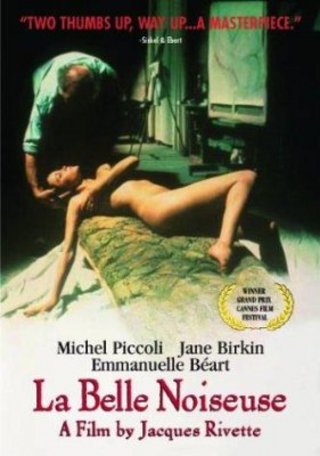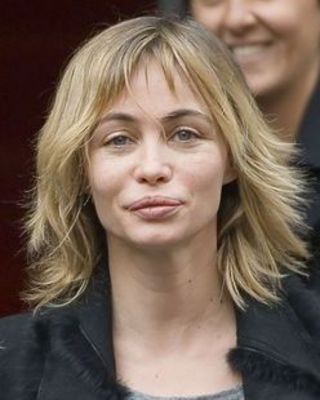La Belle Noiseuse: Watching the Hand of the Artist
By Jason McBride
May 17, 2009
“La Belle Noiseuse” roughly translates to “the beautiful, boisterous woman.” It refers to an historic figure who fascinates Frenhofer. We learn that he abandoned the portrait, for which he used his wife Liz as a model, many years before. Rivette never reveals what went wrong, but it seems that the failure of the collaboration played a part in souring their marriage.
Rivette sets his version of Balzac’s tale in a languid, provincial setting and films it at a languid, provincial pace. He gives us a renowned painter of erotic portraits spending hours in a stuffy studio with a naked young woman. We know that this man, alone with Marianne, feels little passion toward his wife.
Nicolas, realizing the situation in which he has placed his girlfriend, begins to panic. But his jealousy is misguided. The most erotic thing happening in the studio is the presence of Béart’s unrepentant callipygian form. Otherwise, it’s exhausting, painful work. The sweating Marianne holds increasingly pretzel-like poses for hours, while Frenhofer scraps sketch after inked sketch as he searches his unconscious for a portrait he has yet to create.
At first, Marianne complains of muscle cramps. Frenhofer can’t get a bead on his subject. But they begin to play off of each other, and Frenhofer starts to warm up. Marianne asserts herself, and the hierarchy of artist and model flattens. Frenhofer strives to capture Marianne’s essence, a goal that necessitates an equal partnership between the two. It is this process, not infidelity, which reveals the cracks in Marianne’s commitment to Nicolas. It also paves the way toward a kind of renewal for Frenhofer and Liz.
What makes this film special is Rivette’s casting of “the hand of the painter Bernard Dufour.” We get to watch real works being created, as the camera alternates between Piccoli’s gaze, Béart’s poses and patiently filmed shots of Dufour’s pens and brushes generating sketches and paintings.
It would be easy to dismiss this as a gimmick, or fancy it up by calling it “cinema verité.” But seeing Frenhofer/Dufour at work becomes engrossing, like watching a cooking show or a nature documentary. Most directors try to grab your attention with staccato cutting, pithy dialogue, and explosions. Instead of attacking, Rivette releases control and allows his audience to observe.
--
Wikipedia
“La Belle Noiseuse”
Jacques Rivette Director
Michel Piccoli Frenhofer
Jane Birken Liz
Emmanuell Béart Marianne
-- ADVERTISEMENT --

